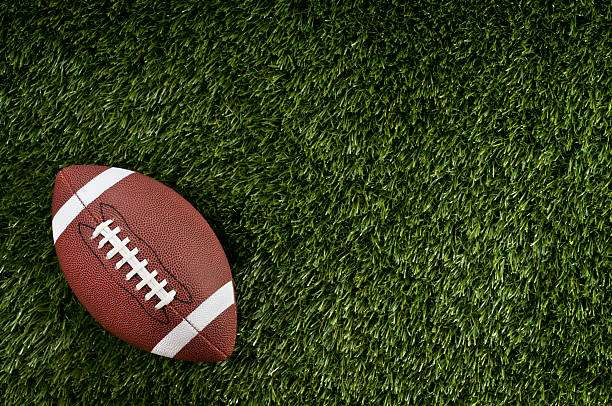West Orange, Texas, high school football player Reggie Garrett had just thrown his second touchdown pass of the game Friday night when he jogged to the sidelines, gave a coach a low-five and collapsed.
Just over an hour later, doctors at Memorial Hermann Baptist Orange Hospital declared the 17-year-old senior dead.
Though doctors weren't sure what killed Garrett (an autopsy was planned), he was at least the fourth high school football player to die in action this season. In August, an 18-year-old South Carolina player died during a scrimmage. He had an undetectable heart defect, a deputy coroner told reporters. On Sept. 7, a 15-year-old player in Orlando, Fla., collapsed on the practice field and died after being rushed to the hospital. And on the same day Garrett died (Sept. 17), a 16-year-old Chickasha, Okla., lineman died in the hospital after collapsing at practice three days earlier. Media reports blamed heat exhaustion.
Football fatalities remain rare, but the game can be dangerous. That doesn't mean kids shouldn't play, experts say, but it does mean parents and coaches should take injuries seriously. [Tips for Protecting Teens from Sports Injury]
"We want to keep kids in the game, remaining active," said Lindsay Hansen, a recreational safety program manager at the nonprofit SafeKids USA. "But to do that, safety has to be one of those tenets, a part of the whole picture of sports."
The most-dangerous games
According to the American Football Coaches Association, fatalities directly caused by football injuries have been on the decrease since 1931, when the association began keeping records, and fatalities from indirect causes have held steady since 1966.
In 2009, three players (two high schoolers and one in a non-school league) died as a result of hits taken during a game or practice, according to a report by the National Center for Catastrophic Injury Research. Fifteen others (12 high schoolers, one non-school player and two college players) died of indirect causes, such as an underlying medical problem or heat stroke, the report said.
Among high school sports, football is responsible for the most injuries per player, the Centers for Disease Control and Prevention found in a 2006 study. That study took into account the number of teens playing each sport and the number of sporting events, combined into a measure dubbed "athletic exposure." For every 1,000 athletic exposures, football players received 4.36 injuries, the study found. That put football head and shoulders above the second-place sport, wrestling, which showed 2.5 injuries per 1,000 exposures.
Boys soccer, girls soccer and girls basketball rounded out the top five in most-dangerous sports. Other sports, including boys basketball, volleyball, baseball, and softball, all had fewer than two injuries per 1,000 exposures.
Less-popular sports are often left out of such analyses, but they can be dangerous as well. According to SafeKids USA, which is dedicated to preventing childhood injury, ice hockey and rugby have high injury rates for boys, and gymnastics ranks high in injuries for girls. In fact, a nationwide study published in the September-October issue of the Journal of Athletic Training showed that for children ages 9 to 14, hockey-related injuries leading to emergency department visits more than doubled between 1990 and 2006.
Counting concussions
By far, the most-common injuries are the mildest. Sprains and strains made up about half of injuries in both practice and competition, according to the 2006 CDC study. Also, half of injuries were mild enough that the player returned to action within a week.
But it seems more-severe injuries are becoming increasingly common in younger athletes — or, at least, those injuries are being reported more. A study published in August in the journal Pediatrics found that concussion, a brain injury caused by a blow to the head, is common in young athletes, sending about 250,000 children between ages 8 and 19 to emergency rooms from 2001 through 2005.
That's troubling, the researchers said, because young brains are particularly susceptible to second-impact syndrome, a catastrophic swelling of the brain that can happen when a player sustains a second blow to the head before the first has healed.
Of the five most popular sports in the study, ice hockey was responsible for the highest rate of concussions. Ice hockey caused 10 concussions per 10,000 players ages 7-11, and 29 concussions per every 10,000 players ages 12-17. Football was next, with a rate of eight concussions per 10,000 in the younger group of athletes and 27 per 10,000 in teen players.
The surprising finding was that while participation in the most popular organized team sports (ice hockey, football, soccer, basketball and baseball) had dropped between 1997 and 2007, concussions related to those sports had doubled. The reason is likely a mixture of greater awareness of concussion symptoms and more vigorous competition, said study author James Linakis, a pediatric emergency medicine physician with Hasbro Children's Hospital in Rhode Island.
Concussions in young brains may be more severe than concussions in mature brains, Linakis said. It takes less force to concuss a child, and the effects may linger longer than in adults.
"A lot more research needs to be done to substantiate it," Linakis said. "But we're realizing that concussions in youth are not the same as concussions in college-aged and professional athletes."
Protecting young brains
Parents need not "be crazy" about the study's findings, Linakis said. The increased rates almost certainly reflect a greater willingness to seek medical treatment for concussions, which would be good news for kids. And steps can be taken to make young athletes safer.
On the legal front, several states have made it illegal for a school athlete with a concussion to return to play without a doctor's clearance. And because concussions can be difficult to diagnose, an increasing number of states and school districts are resorting to neuropsychological testing. Before the season starts, athletes take short online tests to measure things like memory and processing speed. Then, if a player becomes injured during the season, he can retake the test to make sure his brain has recovered before he is allowed back on the field.
Concussion testing keeps players from hiding their head injuries for fear of being benched, said Elizabeth Jacobs, a pediatric emergency medicine physician at Hasbro Children's Hospital who is helping to implement preseason testing for all 10,000 high school athletes who play contact sports in Rhode Island.
"You can't fake the test," Jacobs said.
- Abuse & The Abuser
- Achievement
- Activity, Fitness & Sport
- Aging & Maturity
- Altruism & Kindness
- Atrocities, Racism & Inequality
- Challenges & Pitfalls
- Choices & Decisions
- Communication Skills
- Crime & Punishment
- Dangerous Situations
- Dealing with Addictions
- Debatable Issues & Moral Questions
- Determination & Achievement
- Diet & Nutrition
- Employment & Career
- Ethical dilemmas
- Experience & Adventure
- Faith, Something to Believe in
- Fears & Phobias
- Friends & Acquaintances
- Habits. Good & Bad
- Honour & Respect
- Human Nature
- Image & Uniqueness
- Immediate Family Relations
- Influence & Negotiation
- Interdependence & Independence
- Life's Big Questions
- Love, Dating & Marriage
- Manners & Etiquette
- Money & Finances
- Moods & Emotions
- Other Beneficial Approaches
- Other Relationships
- Overall health
- Passions & Strengths
- Peace & Forgiveness
- Personal Change
- Personal Development
- Politics & Governance
- Positive & Negative Attitudes
- Rights & Freedom
- Self Harm & Self Sabotage
- Sexual Preferences
- Sexual Relations
- Sins
- Thanks & Gratitude
- The Legacy We Leave
- The Search for Happiness
- Time. Past, present & Future
- Today's World, Projecting Tomorrow
- Truth & Character
- Unattractive Qualities
- Wisdom & Knowledge






Comments